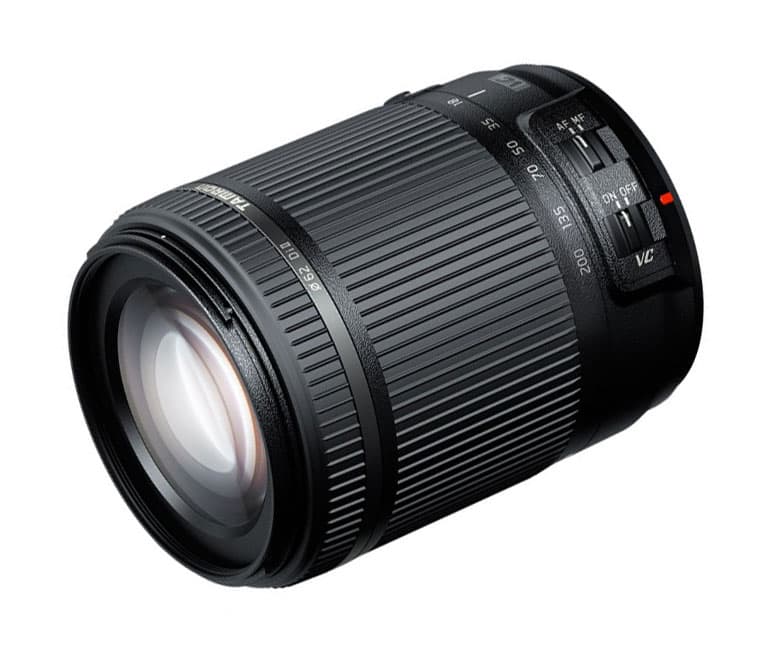If there’s one kind of lens that tends to get a bad press, it’s the all-in-one ‘superzoom’. Conventional wisdom states that zooms with a 3x range can be optically excellent, and 4x can still be very good, but extend that to 10x or more and the compromises become too great. Because of this, many enthusiast photographers feel they should shun superzooms on principle and instead use two zooms to cover the same focal-length range.
While there’s certainly an element of truth to this, it overlooks one fundamental advantage – that you can cover a huge range of subjects without having to change lenses between shots. If you’re out on your own, taking your time, this is no big deal. But if you’re travelling with family or friends, and you don’t want to hold them up constantly, it might well matter. Likewise, if you’re using your camera in dusty or humid conditions, or simply want to travel light, being able to cover everything from wideangle to telephoto without having to change lenses can be a genuine advantage. Superzooms are therefore often considered ideal lenses for travel photography.
Another argument against this type of lens has previously been price: until now it’s always been significantly cheaper to add a budget telezoom to your kit. But at just £169, the Tamron 18-200mm f/3.5-6.3 Di II VC is the cheapest lens of its type by some margin. Its closest competitor, the Sigma 18-200mm f/3.5-6.3 DC Macro OS HSM, costs £250, while Canon and Nikon’s own 18-200mm lenses will set you back around £360 and £550 respectively. But at such a low price, can the Tamron 18-200mm f/3.5-6.3 possibly be any good?
Tamron 18-200mm f/3.5-6.3 Di II VC – Features
The most important feature of this lens is its broad zoom range, which is equivalent to 28-300mm in 35mm full-frame terms so it covers a hugely useful wideangle to telephoto span. It’s also capable of focusing as close as 50cm, which gives a maximum magnification of 0.25x at the telephoto position. This means a subject of 9.4×6.2cm will fill the frame, making the lens handy for close-ups, although Sigma’s equivalent focuses even closer.

Like other superzooms, the Tamron 18-200mm’s best results come from shooting raw and applying lens corrections during processing
The optical formula of 16 elements in 14 groups includes one hybrid aspherical element and one low-dispersion glass element to reduce aberrations such as distortion and chromatic aberration. Other superzooms tend to use more special elements, and this undoubtedly helps explain the Tamron’s low cost.
Optical image stabilisation is built in and is more or less essential on a lens this long, with such a modest maximum aperture. An internal focusing mechanism means the 62mm filter thread doesn’t rotate, simplifying the use of polarising filters. The supplied petal-shaped hood fits via a bayonet mount and can be reversed neatly when the lens isn’t in use.
Tamron 18-200mm f/3.5-6.3 Di II VC – Build and handling
In terms of build quality, the 18-200mm is pretty much what we might expect for a £169 lens. The barrel is predominantly plastic, with rubberised grips on the zoom and focus rings. The lens mount is unusual in that it’s made from plastic but with a metal sleeve on the inside that’s presumably designed to minimise wear. A feature of note is a rubber seal around the mount designed to protect against water getting into the camera. With this in mind, Tamron refers to the lens as ‘splash resistant’, but cautions against using it in heavy rain.

On the camera, the lens handles pretty well. Weighing just 400g, it’s the lightest DSLR lens of its type, although at 97mm in length and 75mm in diameter, it’s noticeably larger than Sigma’s equivalent. The zoom mechanism is quite firm, though, and can be jerky when trying to fine-tune composition. But on a more positive note, I didn’t find it at all susceptible to ‘zoom creep’, with no tendency to collapse or extend under its own weight when the camera is pointed up or down. So while the lens can be locked at 18mm using a small switch on the zoom ring, I never felt the need to use it.
Two switches on the side of the barrel control image stabilisation and focusing mode. Like other inexpensive DSLR lenses, the focus ring shouldn’t be turned when the lens is set to AF. However, when it’s switched to M, the manual focus ring rotates smoothly enough. It traverses a pretty small angle from infinity to minimum focus, but despite this I found manual focusing to be straightforward and precise.
Activating the image stabilisation with a half-press of the shutter button gives an uncannily stable viewfinder image, which helps a lot with composition, especially towards the long end of the zoom. I found it was generally good for around 3 stops of stabilisation, with your chances of getting a sharp image improved by taking a few duplicate shots when using slow shutter speeds.
Tamron 18-200mm f/3.5-6.3 Di II VC – Autofocus

Using manual focus, I was able to isolate the daffodil from a busy foreground
Tamron has included a newly designed DC motor-based autofocus system in this 18-200mm lens, which is very quiet and generally accurate. It isn’t the quickest lens in the world when it comes to focusing, but it’s not exactly slow either. For everyday shooting with static subjects it’s fine, and I rarely found myself waiting for the lens to focus. But in more demanding situations – with moving subjects, or in low light – it can start to struggle. Then again, so would any other £170 lens.
Tamron 18-200mm f/3.5-6.3 Di II VC – Image quality
As mentioned, superzoom lenses aren’t exactly known for their image quality. The Tamron 18-200mm doesn’t buck this trend, and it isn’t the best lens on the market in terms of optical quality. However, it’s important to keep its flaws in context, because when used with care the images it creates are fine for sharing on the web or social media, or printing to around 12x8in (or A4) in size.
So how does it behave? Pretty typically for a superzoom, in fact: it’s sharpest at wideangle, especially in the centre of the frame, and gets progressively softer as you zoom in, with little in the way of really fine detail at longer telephoto settings. The corners of the frame are noticeably softer than the centre, and you’ll usually want to stop down to f/8 for best results.

(18mm) The lens covers a useful range, from a 28mm equivalent wideangle…

(200mm) … through to 300mm telephoto
There’s also fairly strong barrel distortion at wideangle, turning to pincushion across most of the remainder of the range. At the two extremes of the zoom, strong green and magenta colour fringing is visible in the corners of the image due to lateral chromatic aberration, along with very noticeable vignetting at maximum aperture. These are archetypal characteristics of long-range zooms.
As it’s a third-party lens, cameras won’t generally fix these flaws in their JPEG output, although most Nikon DSLRs will correct the colour fringing. However, if you’re prepared to shoot in raw and post-process, distortion, vignetting and chromatic aberration can all be eliminated effectively (a profile for the lens is available for Adobe Photoshop and Lightroom users). Certain raw converters such as DxO Optics Pro also do a good job of selectively increasing sharpening towards the corners of the frame, in effect making images look more detailed than they really are.
Resolution

Red: 18mm; Green: 50mm; Blue: 200mm
Solid: centre; Dotted: corner
The graphs from our Applied Imaging tests indicate fairly typical behaviour for a superzoom lens. Central sharpness is pretty good at 18mm, but the corners are noticeably softer. Zoom in to 50mm and the central sharpness is maintained, but the corners now get substantially worse. At 200mm the central sharpness is low and the corners are poorer still. In general, best results are had at around f/8.
Shading

18mm

200mm
Vignetting is rather noticeable when shooting at maximum aperture and at the extremes of the zoom range, although it mostly goes away on closing the aperture down a stop. It’s also minimal in the middle of the zoom range. The rather abrupt fall-off towards the corners at 18mm is visually more objectionable than the smoother profile fall-off at 200mm.
Curvilinear distortion

18mm: SMIA TV = 3.1%

50mm: SMIA TV = 1.6%
Strong barrel distortion is visible at wideangle, which will give curved horizons in landscape shots. Zoom in and the distortion switches to pincushion that is strongest at around the 50mm mark. This can be fixed easily in software, but is likely to play havoc when judging compositions through the viewfinder.
Tamron 18-200mm f/3.5-6.3 Di II VC – Our verdict
Tamron has a long record of making superzoom lenses for DSLRs, and this latest 18-200mm behaves very much as we’d expect. The 10x zoom means it’s optically flawed compared with shorter-range options, but a single lens that covers so many photographic opportunities is undeniably useful. Despite its bargain price, it doesn’t make too many concessions compared with its more expensive peers.

Here the lens has done a good job shooting into the light, showing little in the way of flare
This lens might appear to be aimed at casual photographers, but in reality you’ll get the most out of it if you’re prepared to shoot in raw and post-process away evident flaws. The images will look just fine, unless you like to print large or scrutinise them for pixel-level detail. You’d no doubt get technically better files by using two shorter-range zooms, but if, in practice, you don’t have the inclination to change lenses between shots, the point is moot: getting a shot that’s not especially sharp at 200mm definitely beats not getting one at all.








